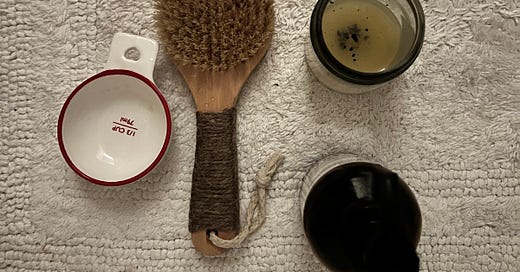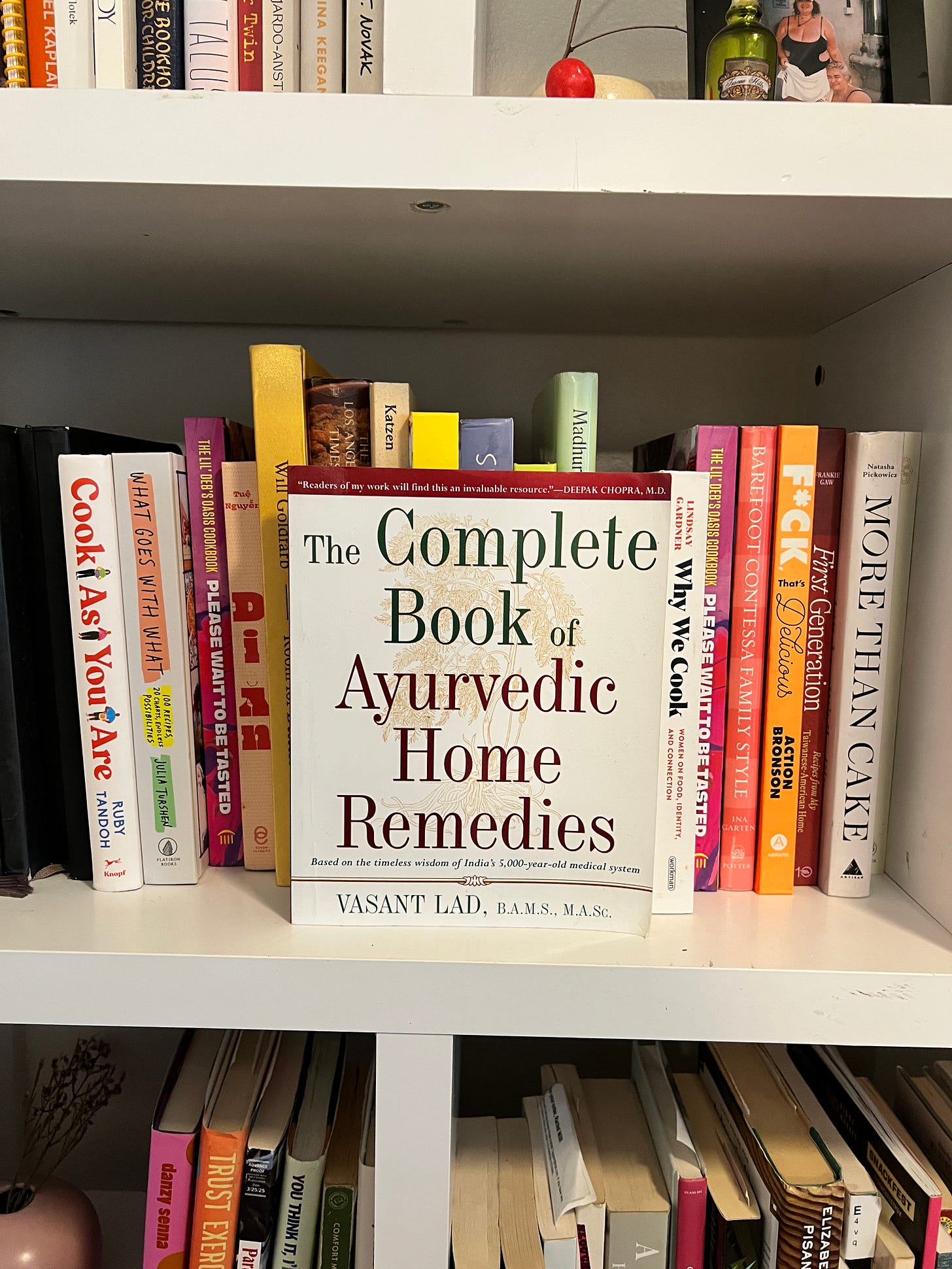During the fires in January, I found myself in my parents home in Orange County calling my best friend Li.
“I just want to self-harm,” I told them. “I want to obliterate myself with weed and alcohol.”
“I get that, bro,” they said, speaking from smoke-choked Northeast L.A.
I didn’t completely destroy myself, but I did buy a vape, some edibles, and have a few “fat-guy dinners,” as Emma calls them. It was enough to soothe me when the architecture of the world around me was changing too fast for me to be present.
A little later in January, a dear friend from my MFA, Sara, posted that her Ashtanga yoga studio was offering a beginners month in February for newcomers. I had practiced Ashtanga when I lived in Indonesia, more than 10 years ago. The practice, then, was a thrill for me. I found myself in all sorts of shapes and loving the classical sequence of poses. There was also a complicated relationship with the teacher, one that I’m still mulling over today.
One of the hallmarks of Ashtanga is that it is traditionally practiced in the morning hours. For this course, I would be showing up at the shala at 7:30 a.m. Far earlier than I have ever recently dragged myself out of bed. So early that any activity at that time I would have considered a foregone conclusion. During the pandemic and recovery from spine surgery, I found myself sleeping 10, 11, even 12 hours a night and rolling out of bed just before 9 a.m. for remote work.
It would take a huge shift to make it to my mat, but for some elusive reason, I felt that I wanted to make this change.
I leaned on childhood friend and healer of many means, Lindsay, for guidance for this shift. I was curious about all sorts of Ayurvedic principles I was learning at my other studio, Kinship, in Highland Park, and also the balance of an acid-alkaline diet. I confided in her about my excessive sleep, and contributing factors, like getting so high and gorging myself on whatever was in sight to the point of horrid acidic heartburn attacks as I laid down for sleep.
She encouraged me to read about Ayurveda, and suggested a possible Kapha imbalance for my sluggish behavior and tendency toward sloth. More interestingly, she also hypothesized a possible Vata imbalance, as the underlying issue. Throughout all this time, I’ve struggled with my writing practice. Preferring to bury myself in a night out or drink with friends rather than commit to a project or practice. It’s as though my body is yearning for creative output but I’d rather stuff the feelings down than engage in the hard work of making art. Vata is associated with air, space, and the mind—fitting that it might be the thing that is actually causing a wrinkle in my existence.
I read Deepak Chopra’s Perfect Health as a primer for inquiry. In my bed, relishing in an early night, sober, I felt a great lightness in my body. What if I could affect my health and make changes that make me feel better? I never really thought it possible. It seemed prior that health issues just arose without reason and I had little agency in their resolution. Like the horrible back pain that started my last year in my MFA.
I read more, buoyed by this knowledge. I read Vasant Lad’s The Complete Book of Ayurvedic Home Remedies, learning small changes I could make to live a more comfortable, complete life.
When I signed up for Ashtanga Yoga Glassell’s beginner month in February, I still wasn’t sure how I would arrive at the mat every morning. I stopped drinking and smoking in those last days of January. I started getting in bed at 8 p.m. every night (for a 6:50 a.m. arousal, I know, it’s a lot of sleep I’m still figuring it out). I cut back on one of my psychiatric medications known to cause grogginess. And then, I started practicing.
Returning to an Ashtanga practice has been astonishing. I joked with a fellow Ashtangi before practice about my journey to the practice. “I used to practice earlier in my life, but it wasn’t pure,” I told him. “Mine wasn’t pure before either,” he laughed back. Earlier, my Ashtanga was taught as a drop in class in the evening, we never really memorized the sequence, there was no on-boarding, I don’t even recall learning about the mula-bandha, a crucial yet tiny movement in the pelvic floor that has helped me exorcise so much stagnant energy stored there.
I told my somatic yoga teacher, Bree, about the experience, breathless, a few weeks in.
“I used to practice Ashtanga,” she said, a faraway look in her eyes. “But as a former ballerina I found it was too rigid and perfectionist for me. I needed something more fluid.”
Some may find the sequence rigid. You build your own practice of ordered sequences that build upon one another. Still, I’ve tried to retain my somatic practice in the style of Bree. Friday afternoons spent spinning in the style of ecstatic dance. I still attend her Saturday breathwork class where we grunt, scream, and shake free of shame and judgement. With this foundation, I found myself going deeper with Ashtanga.
During the most intense change of season, winter to spring, summer to fall, there is a practice called purvakarma to rest the digestive system and process undigested emotions. As I write this I am on day 7 of the cleanse, the last five days exclusively eating a diet of basmati rice, mung bean, chopped veggies, spices, and ghee.
On the intro call with my teacher Rocket, I found myself practically vibrating as he talked about the process and its purpose. I was salivating over the blandest diet of my life, promising an opportunity to draw back the layers of the self and go deeper in the body. Several unconnected people have remarked “you’re glowing.” My body feels awake, alive.
For a food writer, this has been the most counter-intuitive practice. I’m used to chasing meals for newness, prestige, or whatever craving strikes me daily. My partner Emma cooks most of our meals and grocery shops for our household (thank you, darling) so even the process of going to India Sweets and Spices with her and walking down the aisles to find my specific ingredients felt like a channel to the self.
Strangely, I haven’t found it too difficult to keep up the mono-diet. I’m enjoying it, even. It’s the same feeling of reading the book about Ayurveda earlier in my journey. It feels good to be doing something good for myself.
In Rocket’s missive on the last day of the main cleanse he shared, “Think of the essential Ayurvedic principle: like increases like. So as we move towards balance, balance becomes what we crave. As we keep moving towards balance, we will want more balance.”
I AM WANTING BALANCE.
Life feels good, slower. My days seem short and I take less in. My writing practice is “humming” as Sara put it. I spend time just staring at my dog, wondering at his smallness and humanity.
When I talked to friend Miles about my sober king behavior he remarked, “Wow, you’re really raw-dogging 2025.”






